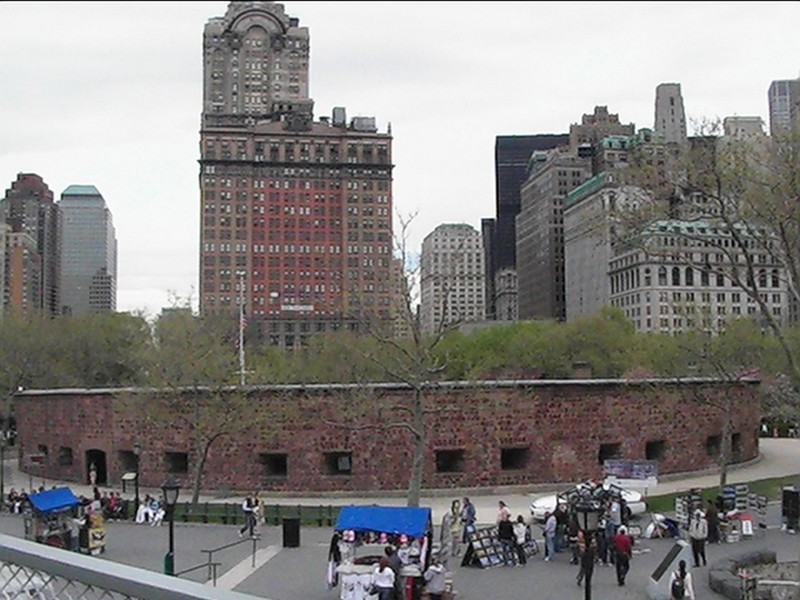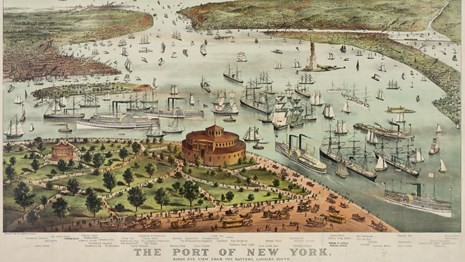Castle Clinton
Introduction
Text-to-speech Audio
Images
Castle Clinton

Castle Clinton National Monument is one of the most instantly recognizable landmarks in a city full of recognizable landmarks.

Backstory and Context
Text-to-speech Audio
In the early 19th century, tensions between America and Britain were starting to heat up into what would eventually become the War of 1812. Four forts were constructed on islands within the vicinity of New York City. One of the forts, Southwest Battery, was constructed on the rocks on an island off the lower tip of Manhattan. Construction began on the fort in 1808 and was finished by 1811. The Southwest Battery’s weaponry consisted of 28 cannons, ready for battle. In 1812, General Joseph Bloomfield was appointed commander of all fortifications in New York City, and he chose to set up headquarters at Southwest Battery. Even though the fort was ready to withstand any attack, Southwest Battery never had to fire its cannons. In 1821, the United States Army no longer required the fort and leased the land to New York. Although the fort was originally located on a nearby island, landfill expanded the lower area of Manhattan to incorporate the fort into Manhattan.
In 1817, the fort was renamed Castle Clinton in honor of Dewitt Clinton who would become Mayor of New York City and Governor of the state of New York. In 1823, Castle Clinton reopened as an entertainment venue called the Castle Garden, and it quickly became a hot spot in New York City. Over the years, the fort underwent many major renovations and served as a promenade, a restaurant, an exhibition hall, an opera house, and a live theater center. Castle Garden hosted several successful operas and plays, and it served as a place to display inventions like the telegraph and the steam-powered fire engine.
During the immigration years, Castle Clinton was turned into the nation's first ever immigrant processing facility in 1855, in operation until 1890 (predating Ellis Island). Through that period, over 8 million immigrants passed through Castle Clinton. An estimated two in every three immigrants passed through Castle Clinton. In 1890, the federal government took responsibility for the processing of immigrants and relocated the immigration landing depot to Ellis Island, relieving Castle Clinton of its immigration duties. Unfortunately, in 1897, a fire destroyed most of the immigration records held at Castle Clinton.
The fort was transformed into the site of the New York City Aquarium in 1896. The aquarium became one of the city's most popular attractions, averaging over 5,000 visitors per day, and 30,000 visitors on the opening day. One of the most popular displays was the beluga whale. The building was modified several times to accommodate the extensive range of marine life housed in the aquarium. The aquarium was eventually closed and relocated to Coney Island in 1957.
The fort was saved from demolition in 1946 and later restored to its original fort structure by the National Park Service, then reopened to the public in 1975. It was officially declared a national historical landmark in 1950 by the government. Today, the fort has become a departure point to the Statue of Liberty and thousands of tourists still visit Castle Clinton to take in its surrounding history. The website states, “The fort originally built to keep people out now welcomes visitors from all over the world.”
Sources
Productions, Mixit. "Castle Clinton." New York Harbor Parks. Accessed April 18, 2017. http://www.nyharborparks.org/visit/cacl.html.
"Castle Clinton |." NYPAP. Accessed April 18, 2017. http://www.nypap.org/content/castle-clinton.
